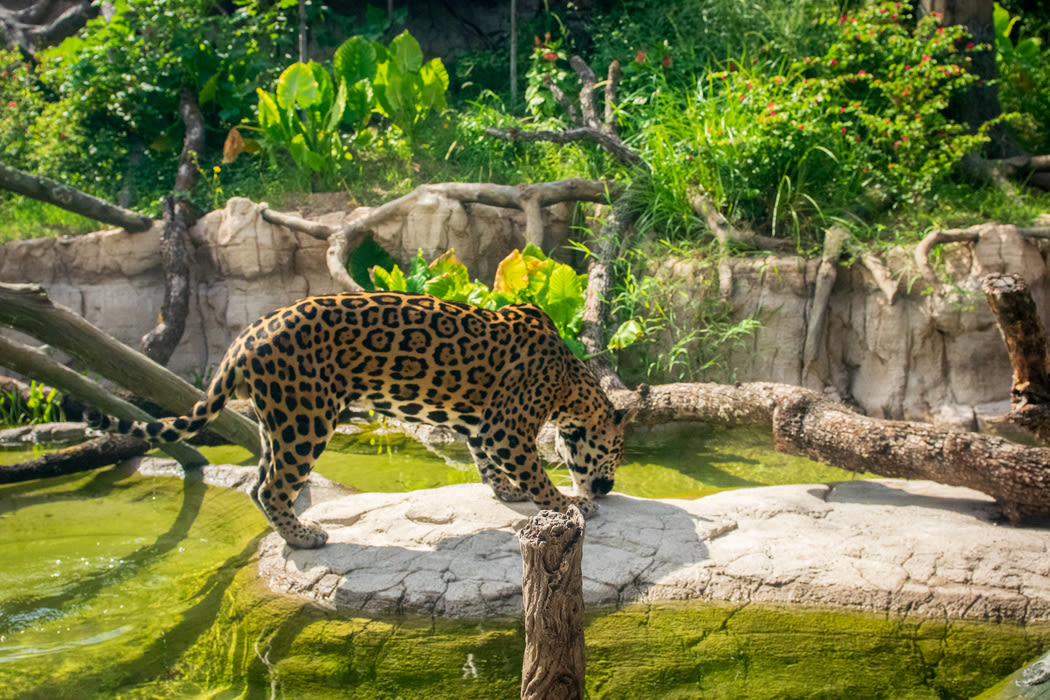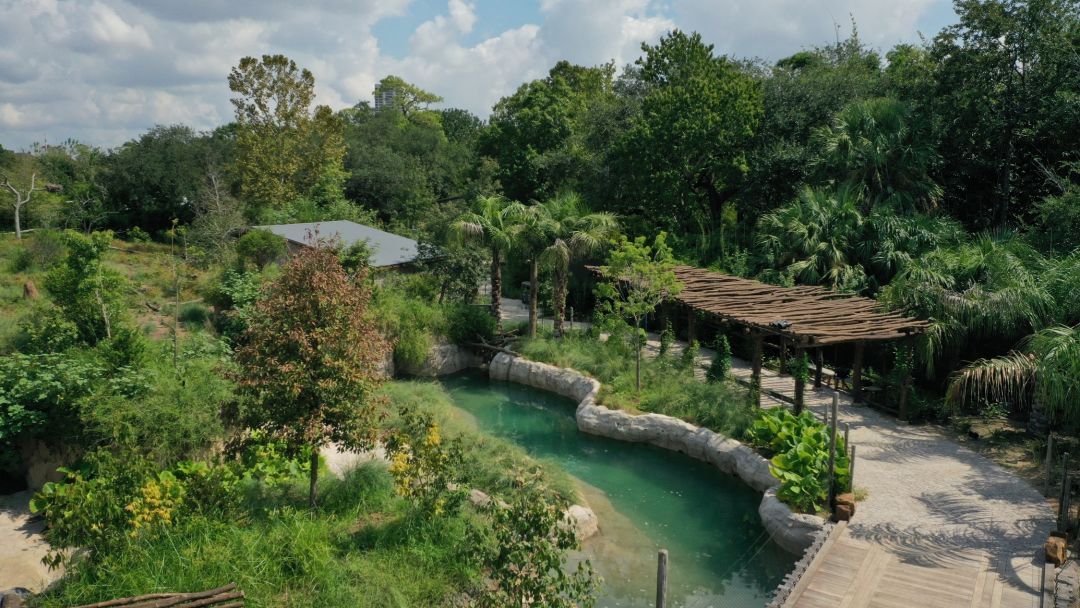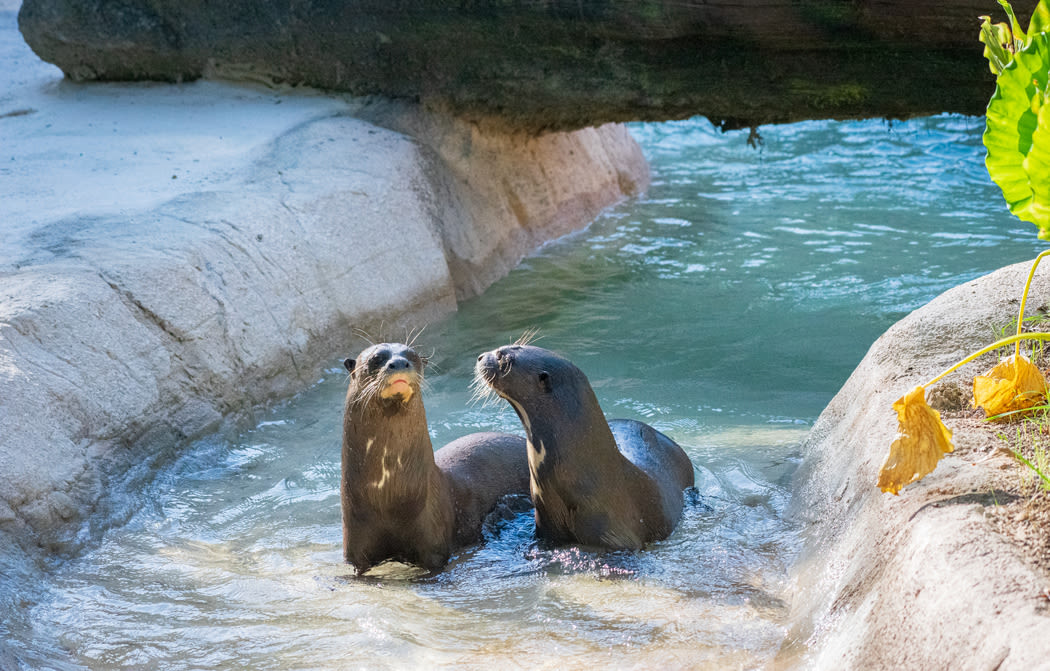Take a Trip to the South American Pantanal, No Passport Needed

Tesoro the jaguar in his new habitat inside the Houston Zoo's South American Pantanal.
Image: Jackelin Reyna/Houston Zoo
Ready for an exotic adventure? Last weekend the Houston Zoo debuted its new exhibit, South America’s Pantanal, which takes visitors on a tour of the world’s largest wetland without the need of a new (and likely terrible) passport photo or an hours-long wait at the airport. “We have gone to great lengths to replicate the sense of being in the Pantanal, both for the animals and for our guests,” says Zoo CEO Lee Ehmke. “It is a deeply immersive, richly-detailed environment designed to take you on a journey to one of the world’s great, but little-known, places.”
One of the most fascinating geographical areas on the planet, the South American Pantanal is home to 11,000 different species. This sprawling mix of forests, rivers, marshes, and grasslands, which stretches across 42 million acres of Brazil, Bolivia, and Paraguay, also happens to have a similar climate to the Bayou City, says Ehmke. In fact, it even has its own set of cowboys and cattle.

Since the actual Pantanal is larger than Belgium, Switzerland, Portugal and Holland combined, the Houston version of the world’s largest wetland is obviously smaller, covering 4.2 acres at the northwest side of the zoo. But it’s still plenty diverse; a whopping 51 unique animal species, from the tiniest dart frogs to long-tongued anteaters, call this new, lush habitat home.
The moment visitors step into this exotic landscape—one that’s been four years in the making—a family of howler monkeys will be ready to welcome guests to their not-so humble abode with a cacophony of loud vocalizations befitting their distinctive name. As guests journey across a wobbly cable bridge, beneath dense forest canopies, and through two aviaries, they’ll come face to face with creatures of all shapes and sizes, from the teeny golden lion tamarins, which weigh less than a pound each, to the extremely endangered blue-billed curassow, to the green anaconda, the heaviest snake on Earth.
Visitors will also meet animals they’ve likely never seen before, like the red-rumped agouti, dubbed the “cleanup crew” of South America’s forests (monkeys are messy eaters, if you hadn’t guessed), and spot a familiar face in longtime zoo resident Tesoro, who now watches guests from a fully enclosed jaguar bridge above the exhibit’s walking path. And of course, we can’t possibly leave out the giant river otters.
At more than five feet long and weighing over 50 pounds, these supersized versions of your everyday otters frolic about in the waters of the new stream-side habitat. And thanks to clear panels, you can get nose-to-nose with these adorable furry fellows both above and below the water, while also spotting several schools of large tropical fish, sting rays, and turtles further down the stream bank.

Image: Jackelin Reyna/Houston Zoo
As you explore this mysterious new terrain—the second major addition in the lead-up to the Zoo’s 100th anniversary in 2022—remember: There’s even more action happening behind the scenes. For more than a decade, the Zoo has partnered with several on-the-ground wildlife conservation organizations to protect the species visitors will see in this habitat, as well as so many others, says Ehmke. “This exhibit helps us bring that story to Houstonians.”
From $22.95. Houston Zoo, 6200 Hermann Park Dr. More info and tickets at houstonzoo.org.




